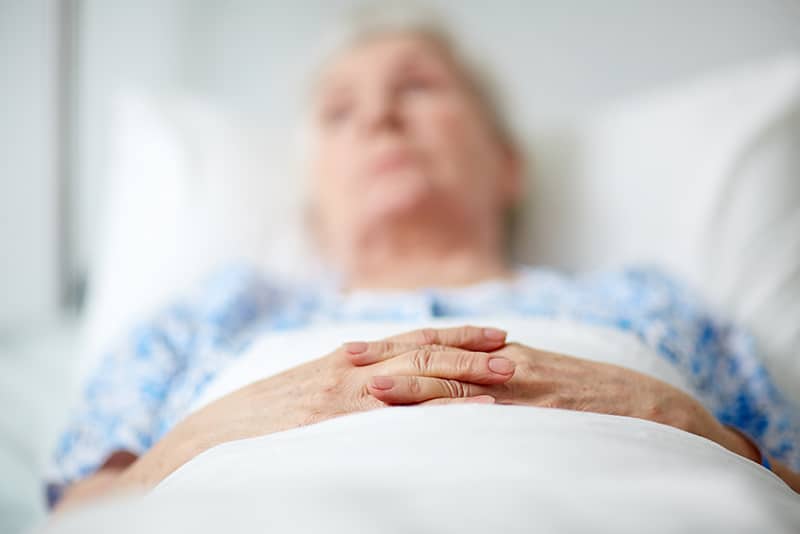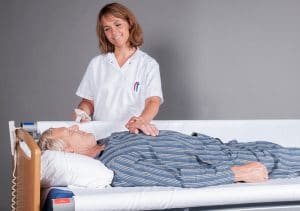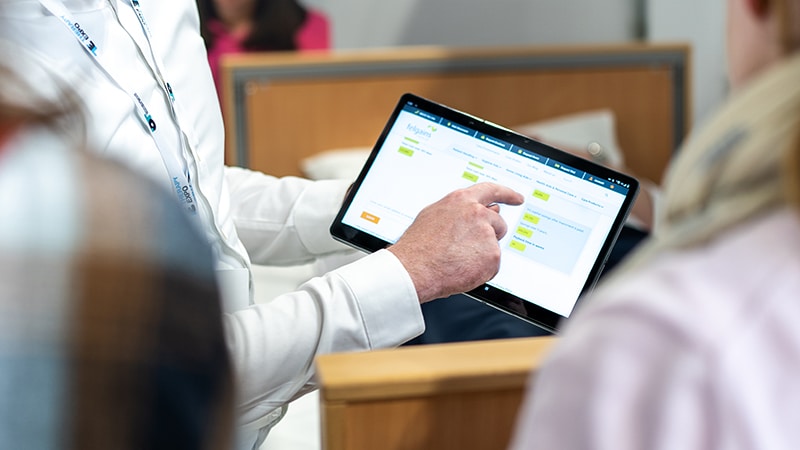Reducing a Care Package from 5 down to 2 with the VENDLET V5S – a Case Study with Enfield Council
Case Study at a Glance
By implementing the VENDLET Patient Turning System into the care package of service user Mary*, Enfield Council were able to reduce the number of carers required from 5 down to just 2. Turning Mary to carry out care tasks previously required 5 carers due to her deteriorating health and the pain caused by turning, but the VENDLET enabled this to be reduced to just 2 carers. This significantly lowered the cost of the care package, whilst improving the quality and comfort of Mary’s care.
*Name changed for privacy

The challenge: Insufficient Carer Resource for Mary’s Care Package
Mary is a 50-year-old lady who lives in sheltered accommodation. She has a medical history of osteoarthritis, hypertension, enlarged heart, depression, IBS, diabetes, obesity, lymphedema and bilateral oedema. Mary is alert and orientated; she can follow instructions and participate in discussions.
Mary is highly dependent on carers for all daily living activities. Mary had been bedbound for over a year and all her care, including strip washing, was being provided at her bed. Mary lies in a supine position, as she is unable to tolerate a sideways position for more than a couple of minutes due to the extreme pain.
Due to Mary’s general health deterioration, her participation in turning and repositioning was progressively reducing. This meant that the sheltered accommodation carers were unable to sustain Mary’s care package as she required more care than the package could offer.
In order to reduce the length of time and the number of times that carers have to turn her on her sides, the OT provided a Wendylett 4 way glide system and wedges to assist with repositioning and changing pads. However, after a couple of weeks, her mobility deteriorated and her pain levels increased, resulting in the carers not being able to provide the care using this system, resulting in the care package going back to 5 carers.
Because of her weight (approximately 28 stone) Mary was also sinking on her bottom. Although 4 carers were able to turn her into her side with the 5th carer providing the care and changing the pad, assisting her up to the bed was very unsafe for the carers due to the manual force required. Mary was also non-compliant with taking her medication when the district nurses visited her, meaning she was often in pain.
Due to these challenges, it became clear that Mary required a better system to help with the moving and handling.
The Solution: Implementing the VENDLET Patient Turning System in the Nursing Home
Mary was moved from the sheltered accommodation to the home where the nurses were always on site to ensure she took her medication, and the VENDLET Patient Turning System was installed by Felgains in the nursing home. This enabled mechanisation of in-bed care tasks, facilitating the reduction of Mary’s requirements from 5 down to just 2 carers for moving and handling.
What is the VENDLET?The VENDLET is an innovative patient turning system that is revolutionising how caregivers carry out in-bed moving & handling tasks for those with limited mobility. At the touch of a button, the VENDLET system allows just one caregiver to reposition a client in bed – with minimal manual handling effort.
|
 |
The Impact and Results: Reducing the Number of Carers Required from 5 down to 2
It was agreed and approved that by removing the physical effort, the VENDLET turning system made caring for Mary possible with 2 carers, as 1 could position Mary while the other carried out personal care and other tasks. And due to the stable position the carers could get Mary into, the washing was easier for the carers and more thorough for Mary
The VENDLET also sped up and smoothed the turning of Mary, greatly reducing her pain during and between these manoeuvres – by allowing the caregivers to complete tasks and return Mary to her supine resting position quicker.
The VENDLET system also allowed the 2 carers to quickly and safely move Mary up the bed in a smooth zigzag motion (click here to watch how) where before it had been unsafe.
And by moving Mary to a nursing home, her medication non-compliance decreased, assisting with her pain management.
The Cost Savings
We do not have accurate costings on Mary’s care package and the transfer to the nursing home, but we can calculate the projected savings in carer cost alone using the VENDLET Cost Benefit Calculator and national averages.
Mary’s previous care package with 5 carers
- 5 carers, 3 visits per day, 60 mins per visit: £247.50 per day
Mary’s new care package with the VENDLET and just 2 carers
- 2 carers, 3 visits per day, 60 mins per visit: £99.00 per day
- A carer cost saving of £148.50 per day
- The VENDLET would pay for itself in 7 weeks
- In the first 12 months Enfield Council would save £47,308.50 in carer cost after paying off the VENDLET
- Over 5 years, they would save £ 264,118.50 in carer cost on this package
How much could you save on your Care Packages?See for yourself how much you could save on your care packages by implementing the VENDLET patient turning system with our Cost Benefit Calculator. Simply input your current details and the calculator will determine your projected savings and ROI. You can then download this in a helpful PDF.
|
 |
Learnings and Conclusions
By implementing the VENDLET Patient Turning System, Enfield Council and the carers were able to;
- Reduce the number of carers required from 5 down to 2
- Improve Mary’s quality of life by greatly reducing the pain she experienced
- Increase the safety for the carers by removing the strain from moving & handling tasks
- Reduce the carer cost by a projected 148.50 per day
And click here to find out more about the VENDLET Patient Turning System family